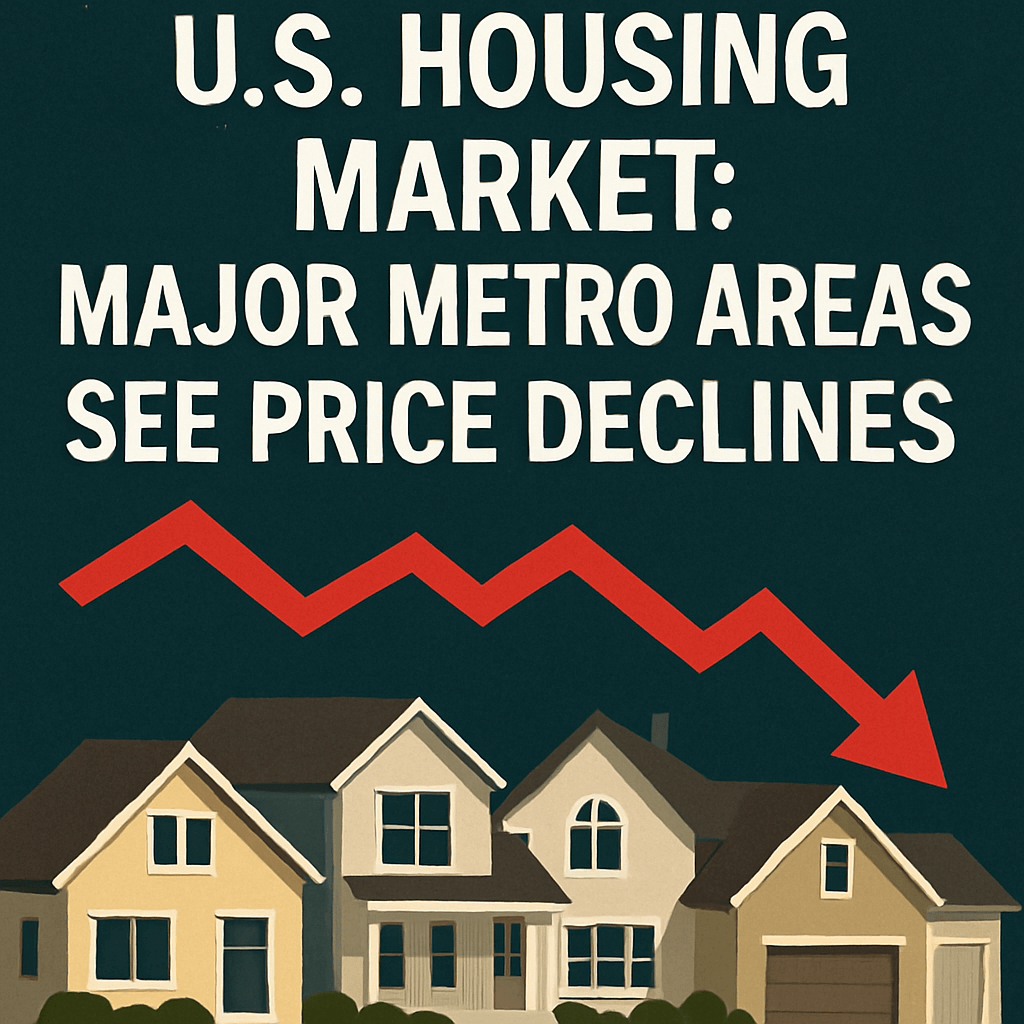U.S. Housing Market: Major Metro Areas See Price Declines

Home-sale prices are experiencing a notable decline in 11 of the 50 largest U.S. metropolitan areas, according to recent data released by Redfin. Forecasts indicate that the nationwide median sale price is expected to decrease by 1% year-over-year by the fourth quarter of this year. This turn of events can be attributed to a combination of growing housing listings, persistently high mortgage rates, and a significant imbalance between buyers and sellers.
Current Trends in Home Prices
In the period ending May 25, the median U.S. home-sale price saw a marginal increase of 1.9% year-over-year. However, this figure is overshadowed by falling prices in key metropolitan areas. According to Redfin’s analysis, the areas experiencing the most significant decreases are led by:
- Oakland, California: -4.9%
- Dallas, Texas: -4.5%
- Jacksonville, Florida: -3%
- Austin, Texas: -2.5%
- Seattle, Washington: -1.4%
This decline is symptomatic of a broader shift expected to manifest later this year. Redfin projects that the median U.S. sale price will stabilize in the third quarter, followed by an anticipated decrease of 1% in the fourth quarter, despite mortgage rates hovering around 7%. This marks a significant departure from earlier in 2023 when prices surged by 3% in the first quarter and were projected to continue rising through the second quarter.
The Surging Supply-Demand Gap
The fundamental driver behind this downward trend is a significant supply-demand misalignment in the housing market. Recent analyses indicate that last month, there were approximately 500,000 more sellers than buyers—a record disparity highlighted by Redfin, which has been tracking this data since 2013. This oversupply is causing homes to linger on the market longer, prompting sellers to reduce their asking prices significantly.
As Venus Martinez, a Redfin agent in Los Angeles, pointed out, many sellers are beginning to adjust their expectations as they navigate this new market landscape. “A lot of sellers, especially those who may have bought at the top of the market, are willing to accept less money for their homes, offer concessions to buyers, and even negotiate commissions. Buyers now have a greater chance to negotiate, particularly on properties that have been on the market for several weeks or those that have already gone under contract and subsequently fell back on the market,” she mentioned.
Mortgage Rates and Affordability Factors
While elevated mortgage rates are likely to persist, Redfin suggests that rising wages could improve home affordability in the latter half of the year, potentially counteracting some negative pressures exerted by high borrowing costs. As the job market strengthens, the income levels of prospective buyers may rise, which could stimulate demand and possibly create a more active housing market.
Comparative Insights from Zillow and Economic Indicators
Redfin’s outlook parallels a recent forecast from Zillow, which reported in April an expectation for home values to decrease by 1.9% this year, a notable revision from their earlier prediction of a 0.6% increase. Zillow’s analysis emphasizes that high levels of housing inventory and elevated mortgage rates are contributing to an environment ripe for price corrections.
Additionally, analysts at Citi Research have recently flagged a potential contraction in residential investment—an early indicator of economic recession. They noted that residential fixed investment is among the most interest-rate-sensitive sectors of the economy, currently reflecting that mortgage rates near 7% are prohibitive for sustained expansion. This contraction follows a lackluster performance in the first quarter of 2023, further complicating the economic landscape.
Conclusion: What Lies Ahead?
As dynamics in the housing market continue to evolve, the prospect of a sustained downturn in home pricing may emerge, particularly if the current buyer-seller imbalance remains unaddressed. Nevertheless, an influx of buyers could swiftly alter the pricing landscape. Conversely, a prolonged decline in housing activity could pose challenges for the broader economy, warranting close observation by market analysts.
“The combination of increasing supply, high mortgage rates, and shifts in buyer sentiment point to an upcoming period of volatility in the housing sector,” said analysts.
Source: fortune